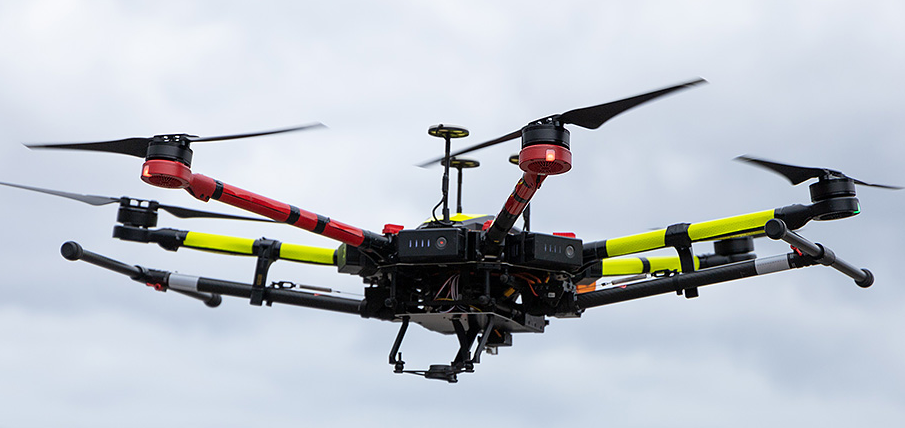Flying high and far to improve reliability and minimise disruption to our customers

SA Power Networks has achieved a major milestone by becoming the first utility in Australia to be authorised by the Civil Aviation Safety Authority (CASA) to conduct long-range nighttime drone operations.
It’s been a journey 2 years in the making, but the first flight took just 30 minutes to complete.
In the late evening of July 29 and 30, our Asset Operations team conducted our first nighttime powerline inspection in the Tantanoola to Kongorong areas in the state's south-east. The team used one of our large multi-rotor drones, equipped with thermal imaging sensor, to carry out a 'Beyond Visual Line of Sight' (BVLoS) thermographic inspection.
Our asset inspection team uses thermal imaging at night to better detect 'hot joints'. These are parts of our network where connections might be weak or failing, causing the lines and joints to heat up. At night background temperatures of the ground below are cooler and more uniform, so high resistance joints become easier to locate and capture. Traditionally, BVLoS drones have been used for asset inspection during daylight hours. However, by conducting thermographic inspections at night, we can monitor our network for faults or failing equipment at optimal times, without causing as much disruption to our customers.
The team, consisting of a Flight crew of 2 with an observer, successfully inspected powerlines over a substantial distance without accessing any customer property, and have since received positive feedback from the community. They were able to identify various issues along the length of the powerlines including these hot-joints pictured below.
We've developed this innovative approach to powerline inspection out of a need for new ways to manage our changing energy use. South Australia's world-leading transition to renewables has led to record low network loads during the day.
David, Asset Management Officer, explains, “This latest accomplishment allows us to now better utilise our Remote Piloted Aircraft (RPA) fleet’s capabilities to increase efficiencies and effectiveness of line inspections.”
Benefits to BVLoS drone inspections include:
- Drones allow us to be less intrusive, more efficient, and safer when inspecting powerlines. While traditionally overhead inspections are performed by helicopter, drones are smaller and quieter so disruption to customers and their properties from overhead is reduced.
- Drones can help spot faults faster than relying on sight alone. This efficiency improves reliability for our customers, meaning the time saved in finding issues can be used to proactively resolve them.
- When using drones, our vehicles only need to attend to damaged assets. This reduces the need to drive through customer land or farms, minimising disturbances to properties and avoiding scaring livestock with loud noises or heavy vehicles.
This step forward in technology supports our goal of utilising new technologies as we move towards a decarbonised future; in fact by using drones in place of traditional powerline inspection methods, we could potentially reduce CO2 emissions by up to 98%.
For more on our drones see our page Inspections by aerial drones - SA Power Networks